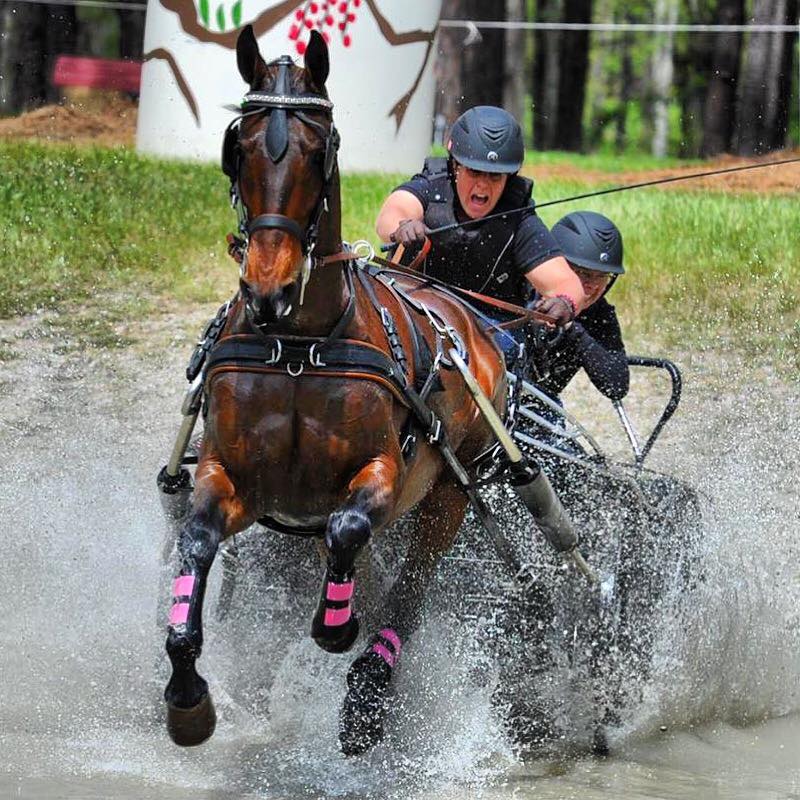Getting It Right Behind the Reins: Proper Bit Fitting for the Carriage Driving Horse
- jess3152

- Oct 11
- 3 min read
Updated: Oct 12
🐴 Getting It Right Behind the Lines: Proper Bit Fitting for the Carriage Driving Horse

In the world of carriage driving, every detail matters — from the gleam of the harness to the quiet rhythm of the horse’s stride. But one of the most important pieces of equipment is also one of the smallest: the bit.
A properly fitted bit is essential for comfort, communication, and performance. It’s how the driver’s hands speak to the horse — and when the fit is right, that conversation becomes effortless, light, and clear.
⸻
💡 Why Bit Fit Matters in Driving
In carriage driving, the bit isn’t just about steering or stopping. It’s part of a complex balance between the horse, harness, reins, and vehicle. A well-fitted driving bit allows the horse to stay relaxed and responsive, while a poor fit can cause confusion, discomfort, and even resistance.
Unlike under-saddle bits, driving bits work with leverage and curb action. This means that every small adjustment — cheek angle, curb chain tension, or mouthpiece shape — can make a big difference in how the horse feels the driver’s hands.
⸻
⚙️ The Anatomy of a Good Fit
Getting the bit right starts with careful observation and correct measurements. Here are the key elements:
1. Width:
The bit should be about ¼ inch wider than the horse’s mouth on each side. Too narrow, and it pinches; too wide, and it slides from side to side, creating uneven pressure. Every horse’s mouth is slightly different, so take the time to measure each one individually.
2. Height:
Adjust the cheekpieces so that the bit creates one or mild two small wrinkles at the corners of the mouth. If it sits too high, it causes constant pressure; too low, and it bangs on the teeth or bars.
3. Curb Chain:
A good rule of thumb is for the curb chain to engage when the shank rotates about 45 degrees. This timing allows the horse to respond to light contact before full leverage comes into play.
4. Tongue Room:
Carriage horses spend long hours in harness, so tongue comfort is crucial. Bits with a gentle curve or mullen mouthpiece give the tongue space and encourage soft, relaxed chewing.

⸻
🪶 Choosing the Right Type of Bit
Different horses — and different driving goals — call for different bits.
• For pleasure driving, a mild Liverpool bit with a smooth mouthpiece often provides just the right balance of control and comfort.
• For combined driving, versatility is key. Many drivers prefer bits that offer precision in dressage and reliable control during marathon phases.
• Butterfly, Elbow, or Swales bits can provide lateral stability or adjustable leverage depending on the horse’s needs and level of training. -I generally stay away from these bits and stick to simple arch mouth or Mullen mouth Liverpools.
No matter the style, the best bit is the mildest one that allows for clear, confident communication.
⸻
🚫 Common Mistakes to Avoid
Even experienced drivers can overlook small details that make a big difference. Here are some of the most common pitfalls:
• Using the same bit for multiple horses without checking individual fit.
• Over-tightening the curb chain to create “more brakes.”
• Ignoring dental issues like wolf teeth or sharp molars that cause pain.
• Overlooking how the bridle fit — cheek straps, noseband, or blinkers — affects bit action and rein pressure.
It’s a good habit to inspect your bits and curb chains regularly. Horses’ mouths change with age, fitness, and training, and your equipment should adjust with them.
⸻
🐎 Listening to Your Horse
The best guide to correct bit fitting is the horse itself. A happy, comfortable horse will chew softly, foam lightly, and maintain even contact on both reins. Signs of discomfort — such as head tossing, mouth gaping, or uneven rein pressure — mean it’s time to recheck the fit.
Watch how your horse behaves both standing still and in motion. The right bit allows freedom of movement and confidence in the connection between horse and driver.
⸻
🌟 The Final Word
Bit fitting may seem like a small detail, but in carriage driving, it’s the foundation of everything. The right bit creates trust, harmony, and precision, transforming the lines into a direct link between your thoughts and your horse’s response.
When the bit fits correctly, communication becomes almost invisible — just quiet understanding behind the lines.
⸻
Ready to learn more about carriage driving, horse training, or equipment care?
Explore our articles and services at www.TCarriage.com, or follow Tanglao Carriage Driving on Facebook for more driving tips, behind-the-scenes photos, and training insights.




Another good blog post!